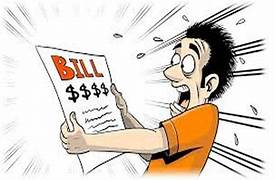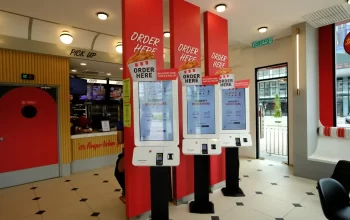When you change the rules of an election, during the middle of an election—and are allowed to do it—as Assemblyman Kiley notes “that is called cheating”. While the Recall election was not close, part of the reason is that the voting was rigged—dead people got ballots, people living out of State got ballots, illegal aliens got ballots, little checking was done of the signatures of the absentee ballots. Due to all of this, known in advance, the vote was suppressed
“The Little Hoover Commission on Thursday kicked off the first of four public hearings intended to help craft a study it ultimately will send off to the Legislature and governor’s office. The initial hearing examined a few reform possibilities and gauged whether there is enough public support to tinker with the system.
As it did two decades ago, California’s latest gubernatorial recall provided fodder for national news outlets thanks to rules which allow almost anyone to get their name on the ballot. Because California’s system allows for a scenario in which a replacement candidate can win the election without gaining a majority of the votes, a circus-like atmosphere ensued much like the 2003 recall.”
The whole system needs fixing. What would you do to fix it?
California mulling fixes to ‘broken recall system’

A panel of political science experts and lawmakers discussed potential reforms to California’s century old recall framework. Critics say the system was abused during the Newsom recall and is due for an update.
Nick Cahill, courthousenews, 10/14/21
SACRAMENTO, Calif. (CN) — After watching joyously as the upstart bid to remove Gavin Newsom failed miserably on election night, California Democrats transitioned from defending their governor to attacking the century old recall rules.
Like a perfectly executed fast break, the heads of two key legislative committees held a press conference not to celebrate Newsom’s victory but promise to fix California’s “broken recall system.”
“Yesterday’s election highlighted the fundamentally undemocratic nature of California’s existing recall process,” said Assemblymember Marc Berman, chair of the Assembly Committee on Elections.
Berman and a variety of influential Democrats bemoaned the recently completed recall, calling it an expensive distraction that pulled Newsom away from more pressing matters like the pandemic, wildfires and drought. Berman, a Democrat from Palo Alto, announced his committee would hold a series of special hearings to craft reforms to bring up for vote during the 2022 session.
But before lawmakers set out to overhaul the recall framework in the coming months, a nonpartisan, independent state oversight agency wants to ensure they have a roadmap.
The Little Hoover Commission on Thursday kicked off the first of four public hearings intended to help craft a study it ultimately will send off to the Legislature and governor’s office. The initial hearing examined a few reform possibilities and gauged whether there is enough public support to tinker with the system.
As it did two decades ago, California’s latest gubernatorial recall provided fodder for national news outlets thanks to rules which allow almost anyone to get their name on the ballot. Because California’s system allows for a scenario in which a replacement candidate can win the election without gaining a majority of the votes, a circus-like atmosphere ensued much like the 2003 recall.
The final list of replacement candidates swelled to nearly 50 and included a prominent conservative radio talk show host, a former Olympian and a YouTube star. The backup pool was so thoroughly unappealing, more than half of voters followed Newsom’s advice and didn’t bother to select a replacement candidate.
The ballots that reached the mailboxes of California’s over 22 million registered voters contained just two questions: “Should Newsom be removed from office?” and “If yes, who should take his place?” If a majority votes no, the recall is defeated. Final results from the Sept. 14 special election are still being tabulated, but as of Thursday the recall was being defeated by more than 3 million votes.
California is one of 19 states with a process for recalling state officials, but only it and Wisconsin have used the tool more than 10 times since the 20th century. The California Constitution allows voters to recall statewide officials, members of the Legislature and appeals court judges, while municipalities can craft their own rules. Disgruntled constituents can try and remove state officials if they can gather a total of valid signatures that equals 12% of the total voters in the last election for the office.
Since 1911, there have been 179 attempts to recall state officials and only 11 have landed on the ballot. Furthermore, just one governor has been recalled in state history, Gray Davis in 2003.
In wake of the special election which cost taxpayers an estimated $275 million, a flood of pundits chimed in, saying California makes it too easy to challenge governors and statewide officials. Critics implored lawmakers to explore changes and strike while public outrage over the expensive recall was still fresh.
Some of the changes bandied about in newspaper editorials include raising the signature threshold needed to trigger a recall, stricter criteria for replacement candidates and proof of malfeasance by the subject officeholder.
As lawmakers delve into the reform issue, they should proceed with caution, says David Carrillo, law professor at University of California, Berkeley.
Carrillo said raising the signature threshold isn’t necessary as the current rules haven’t exactly spurred a rush of recalls. He says setting a higher bar could dilute the power of the direct democracy function enshrined in the state Constitution.
“To me this indicates that state office recalls in California are not a significant problem, they rarely qualify,” Carrillo testified.
Another bad idea would be limiting recalls to instances where the officeholder committed some sort of transgression, Carrillo continued. He said this strategy could lead to legal disputes over what constitutes grounds for a recall and that such a major change would “neuter” the recall function.
“Imposing a malfeasance standard is the quickest way to completely kill off the recall,” said Carrillo.
Of the potential areas of reform, Carrillo said changing the requirements for replacement candidates may be the most effective route. Unlike raising the signature threshold or implementing a run-off or ranked choice system for recalls which would require voter approval, lawmakers could set stricter replacement criteria themselves.
Lawmakers could vote to raise filing fees, increase voter signature requirements or set a smaller window for replacement candidates to collect signatures.
“It’s the thing that by far gets us the most national attention and quite frankly mockery,” Carrillo said of the lax standards for replacement candidates. “This is both the easiest thing to fix and will keep us out of the front page of the New York Times.”
State Sen. Jim Nielsen echoed Carrillo’s presentation and said the Legislature shouldn’t overreact to outside pressure. He signaled he would be a tough sell on the topic of recall changes in the upcoming legislative session.
“I’m going to be a kind of jealous guardian of what I call a sacred right of the people of California to directly be involved,” said Nielsen, a Republican from Chico.
Others on the commission were more adamant about the need for changes, specifically state Sen. Dave Min who said the Newsom recall was clearly politically motivated.
Min, a Democrat from Irvine, said Republicans took advantage of the recall system and forced Gov. Newsom to needlessly campaign during a pandemic.
“He was an incredibly popular governor who was elected with huge margins,” Min said of Newsom’s landslide 2018 victory. “He had to go to war basically and treat this as a full out campaign in an off-year just to make sure that he could keep his seat; if that is not an abuse of process, if that doesn’t signal a problem I don’t know what does.”
In addition to Carrillo, the commission heard from the state’s leading political polling organizations on whether voters want to see changes to the recall code.
Mark Baldassare of the Public Policy Institute of California said that while recent polling shows nearly 90% of voters support a method to recall statewide officers, 66% are in favor of minor or major changes to the rules. Of the potential reforms offered to respondents, the most popular was the proposal to hold a top-two runoff between replacement candidates if no candidate receives 50% of the vote.
Baldassare told the commission next month’s poll will again test Californians’ appetite for changes to the recall system.
Meanwhile a separate UC Berkeley poll released last month also found major support for a run-off if no replacement candidate snags a majority of the vote. Poll director Mark DiCamillo added that 59% of respondents favored toughening the rules to recall officials and adopt a malfeasance standard.
Commission chairman Pedro Nava capped the two-hour meeting by saying the goal of the series of hearings is to allow the public a chance to sound off on the potential changes and give the Legislature a detailed study.
“You have to move forward in a way that has integrity and is respected and that voters will accept,” said Pedro Nava, chairman of the Little Hoover Commission.



